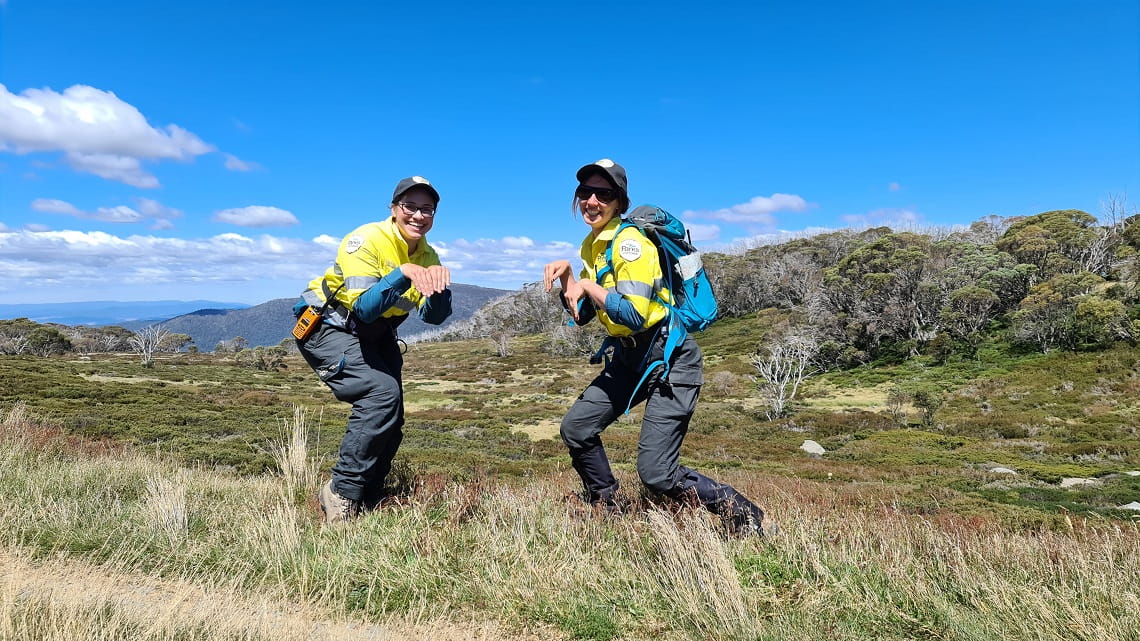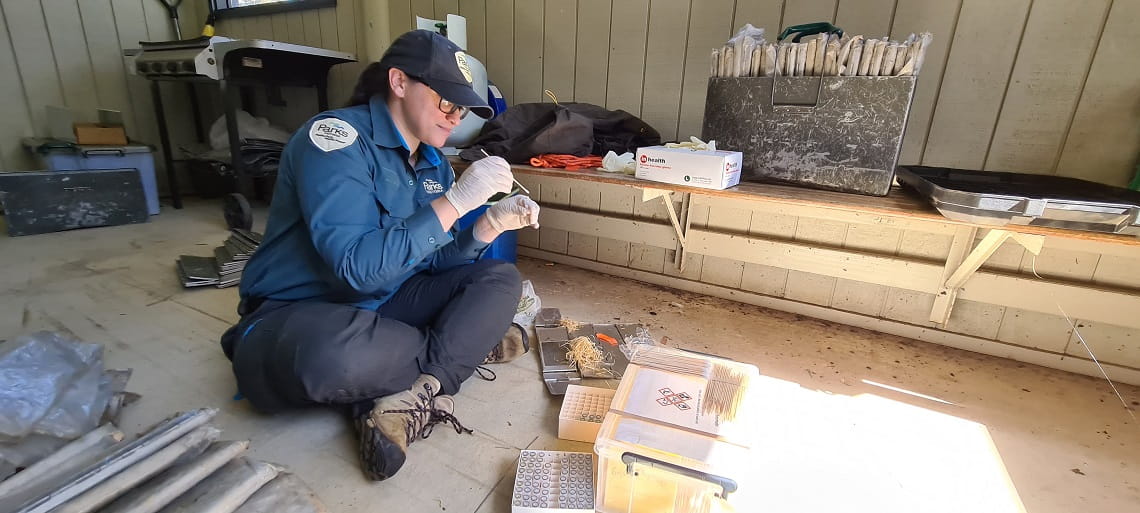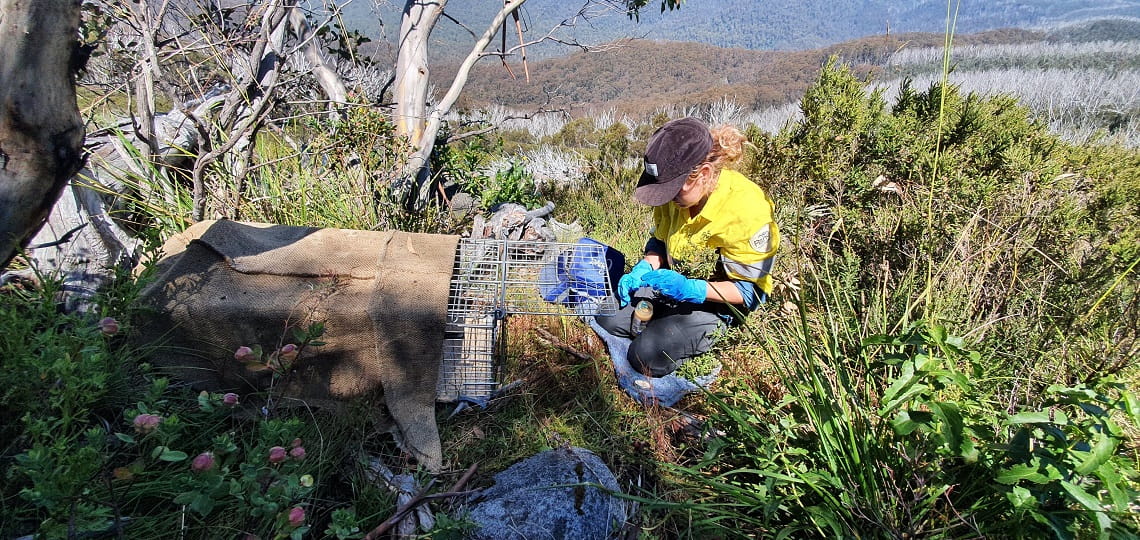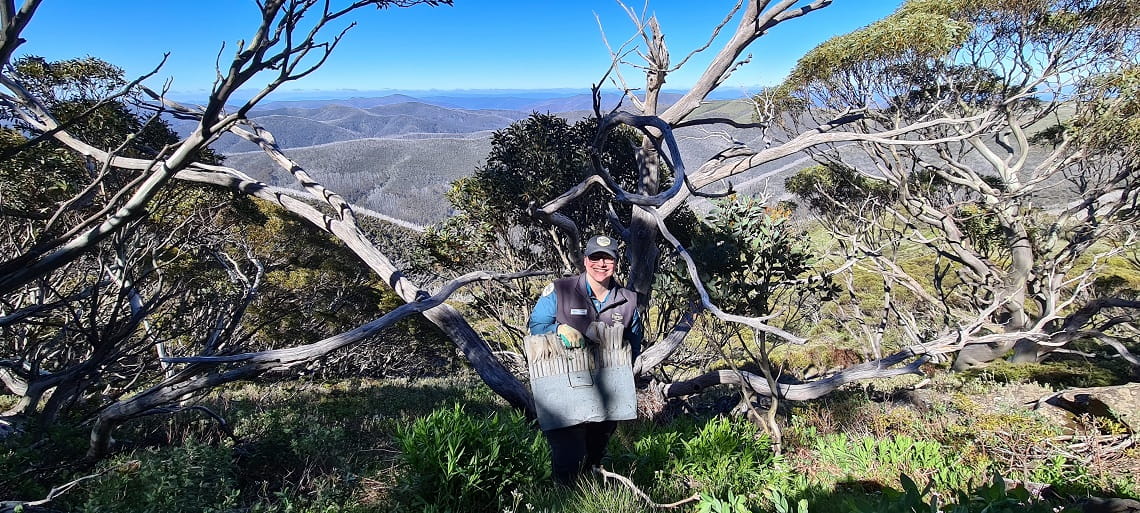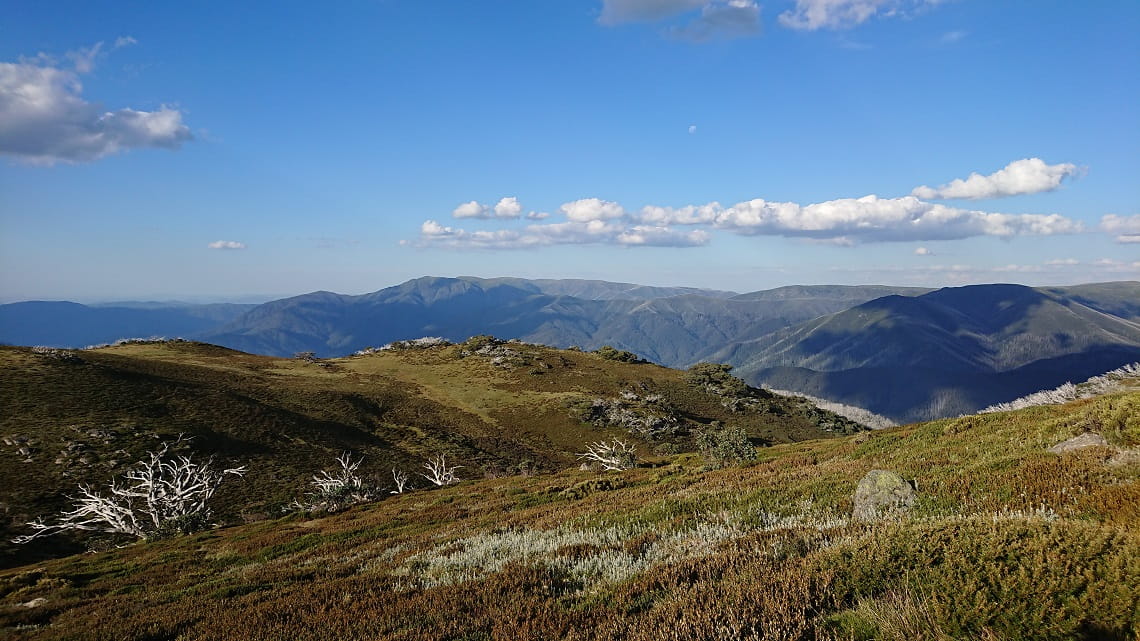
The Parks Victoria team at Mount Beauty have spent hundreds of hours in Victoria’s Alpine ³Ô¹ÏÍøÕ¾ Park.
Walking through the dense network of native grasses, mosses, herbs and shrubs that hug the landscape like a blanket, they are part of the team on a mission to help the tiny marsupial safely tucked away in clusters of granite boulders.
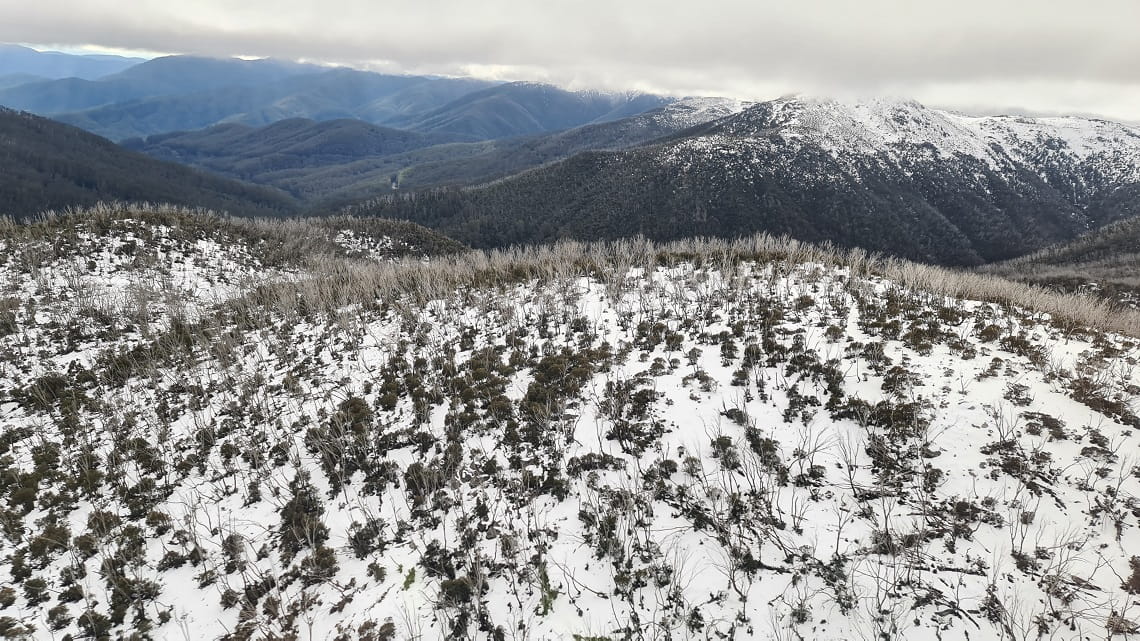
Thought to be extinct until they were re-discovered at Mount Hotham in the 1960s, this is the only Australian mammal that lives exclusively in alpine areas. It’s also the only hibernating marsupial in the world.
Like every other native animal in the Victorian Alps, the Mountain Pygmy-possum has evolved over millions of years to cope with snow, fires, gale-force winds, pounding rain and glaring sunlight.
It has adapted to exist in a very specialised alpine environment, which is extremely vulnerable to the impacts of climate change.
It is small and agile, making it perfect prey for foxes and feral cats.
There are only three locations in the world where this critically endangered native species exists in the wild – Mount Kosciuszko in New South Wales, the Mount Hotham/Mount Bogong and Mount Buller regions in Victoria, which overlap with the eastern section of the Alpine ³Ô¹ÏÍøÕ¾ Park.
The Parks Victoria team at Mount Beauty look after that patch of the Alps.
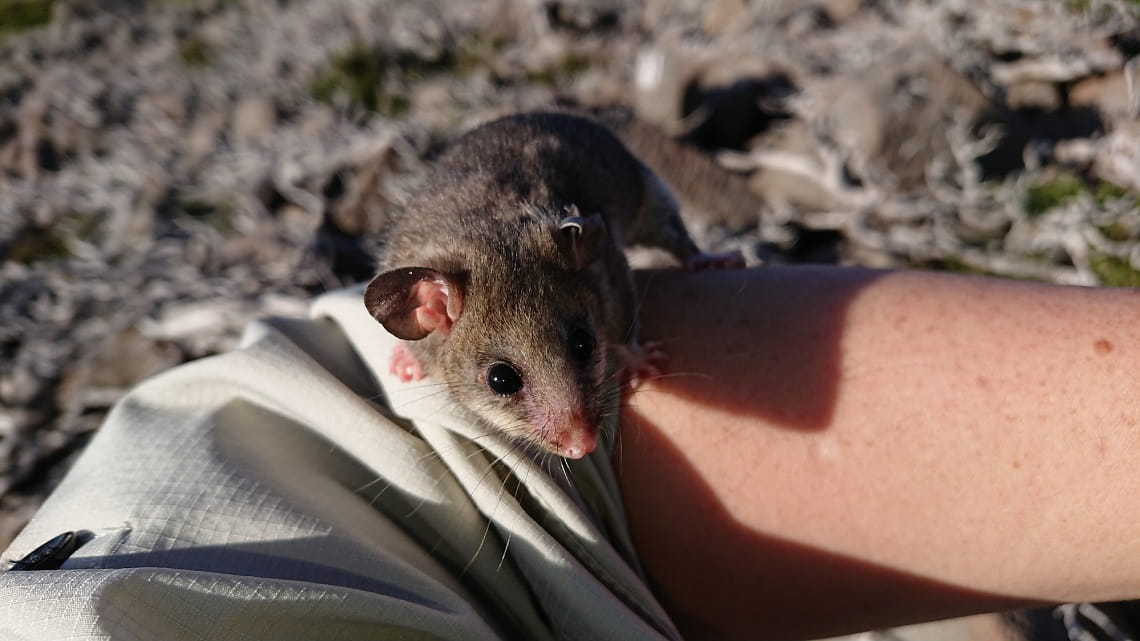
Mountain Pygmy-possum (Burramys parvus)
The team delivers a variety of programs to manage threats to Mountain Pygmy-possums and improve the understanding of pest predators in this area.
Their tasks include park maintenance and weed control, native species monitoring, invasive species monitoring and control, and supporting the logistics and legwork for partner programs like the .
Not only do these tasks benefit the Mountain Pygmy-possums, but they contribute to the overall health of the incredible and fragile alpine landscape, benefiting every native animal that calls this place home.
To help a possum you must think like a possum
Ranger Yohanna has been instrumental in supporting the work of the Mountain Pygmy-possum Recovery Team.
Based in Mount Beauty, her day-to-day work is amongst the possum’s habitat and she knows the area like the back of her hand.
Over the past year alone she has worked with Zoos Victoria to help plan the logistics of supplementary feeding trials, recommend locations to set up cameras to monitor native species, and has even stepped in to prepare Mountain Pygmy Possum, antechinus and bush rat scats for analysis to check on the health of the animals (pictured on the right).
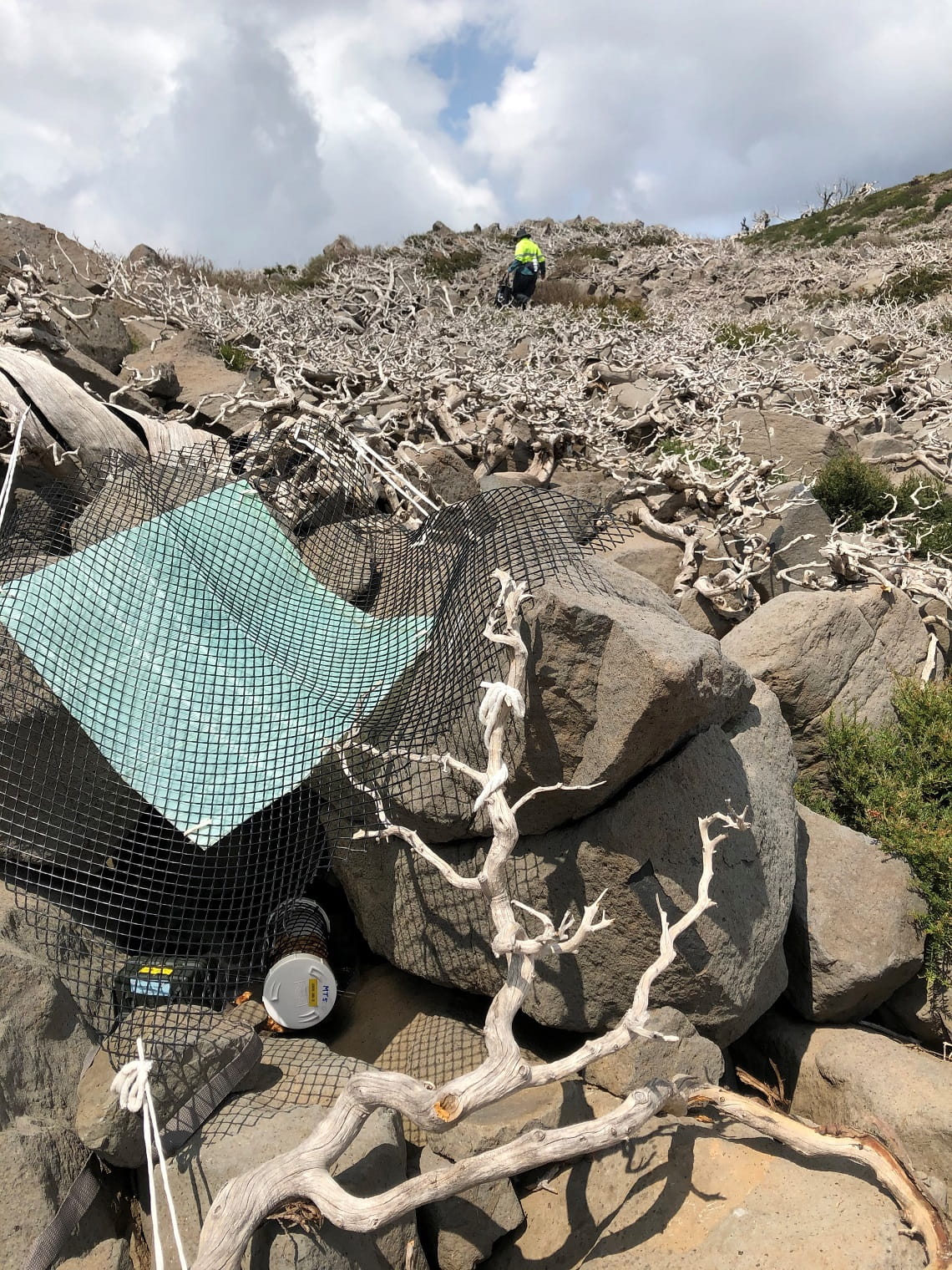
Solid granite boulders provide a safe network of tunnels for them to live in and travel through, covered in native Mountain Plum Pine, Podocarpus lawrencei, whose fruit and leaves (when in bloom) provide food for the possums.
The supplementary feeding tube, in the bottom left of the photo, has been placed among the boulders. The tube is protected with mesh to stop curious birds and hungry ground predators from getting too close to the Mountain Pygmy-possums.
Did you know? The Mountain Plum Pine is one of Australia’s few native conifers from a plant family which has existed in the southern hemisphere since the time of the super-continent Gondwana (180 million years ago). It’s a very slow growing plant that has adapted to the harsh alpine environment by clinging to boulders for security.
The Parks Victoria team also has the very important task of regular fox and feral cat monitoring and trapping, which is done in partnership with Mount Hotham and Falls Creek Alpine Resorts.
The approach to fox control is tried and tested, having been delivered in parks across the state for decades. However, feral cats are a much more challenging problem to manage and there is no established method for their control on a large scale.
The team has been working hard to test various methods, monitoring and evaluating the outcomes, to gradually build knowledge about what works, and doesn’t work, to control feral cats.
In the picture to the right, a cat trap has been set up in the scrub adjacent to Mountain Pygmy-possum boulderfield habitat as the team tests different bait, scent and visual lures for trapping – including rubber geckos, feathers, liver, chicken balls, fish oils and even urine.
Feral cat monitoring helps us understand their behaviour and plan where and when to undertake control.
Because the Mountain Pygmy-possum is such a beloved and critically endangered species, there are many different groups working together to better understand and protect the species.
This project is supported by North East Catchment Management Authority, through funding from the Australian Government’s ³Ô¹ÏÍøÕ¾ Landcare Program and the Victorian Government’s Biodiversity Response Planning program.
Parks Victoria delivers this work as part of the Victorian Mountain Pygmy-possum Recovery Team, a voluntary collaboration of conservation organisations. Partners in implementation include DELWP, Saving our Species program – NSW Department of Planning Industry and Environment, Mt Hotham Alpine Resort Management Board, Mt Buller Mt Stirling Resort Management Board, Falls Creek Alpine Resort Management Board, University of Melbourne, La Trobe University, Ecology Links, CESAR, Goulburn Broken Catchment Management Authority, North East Catchment Management Authority and Zoos Victoria.

